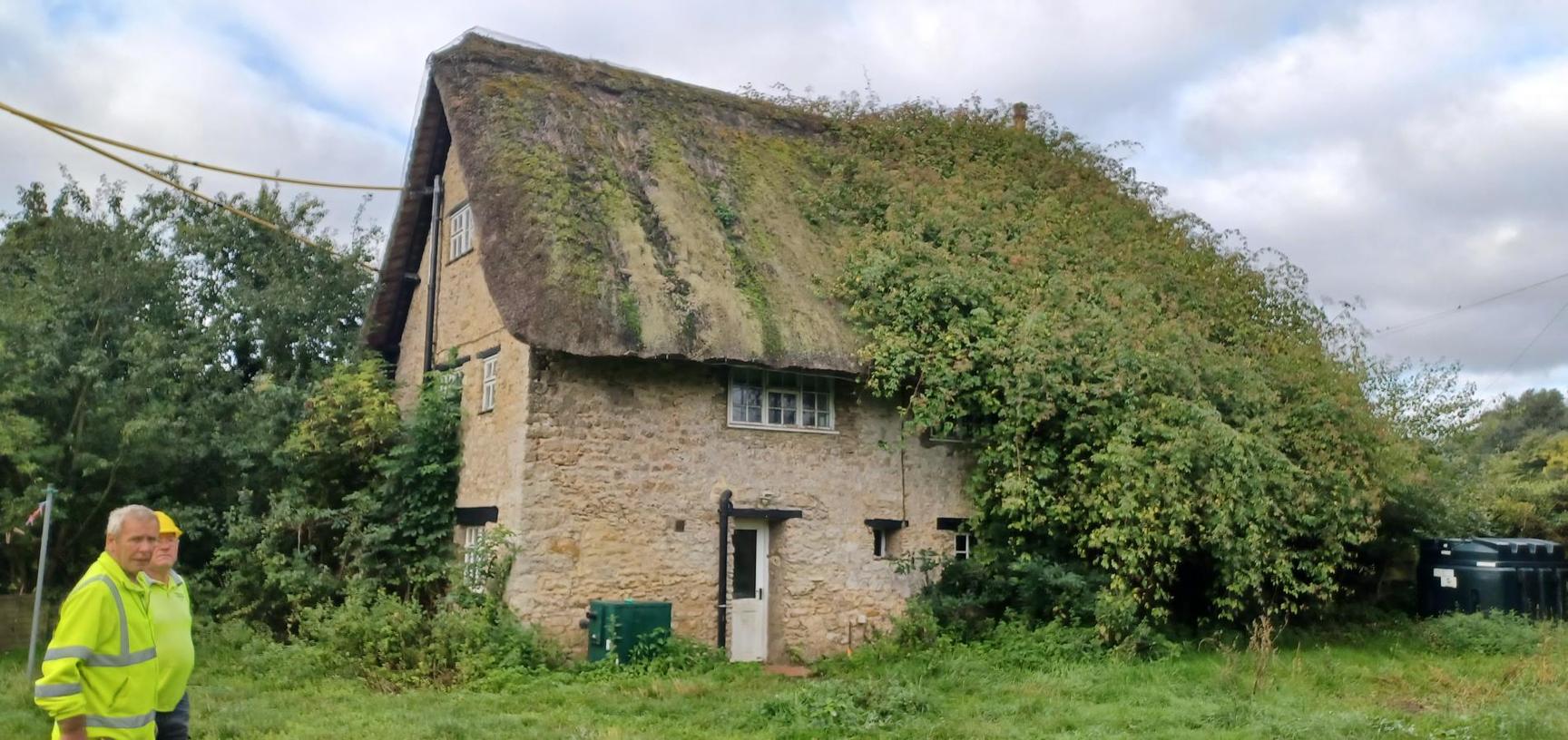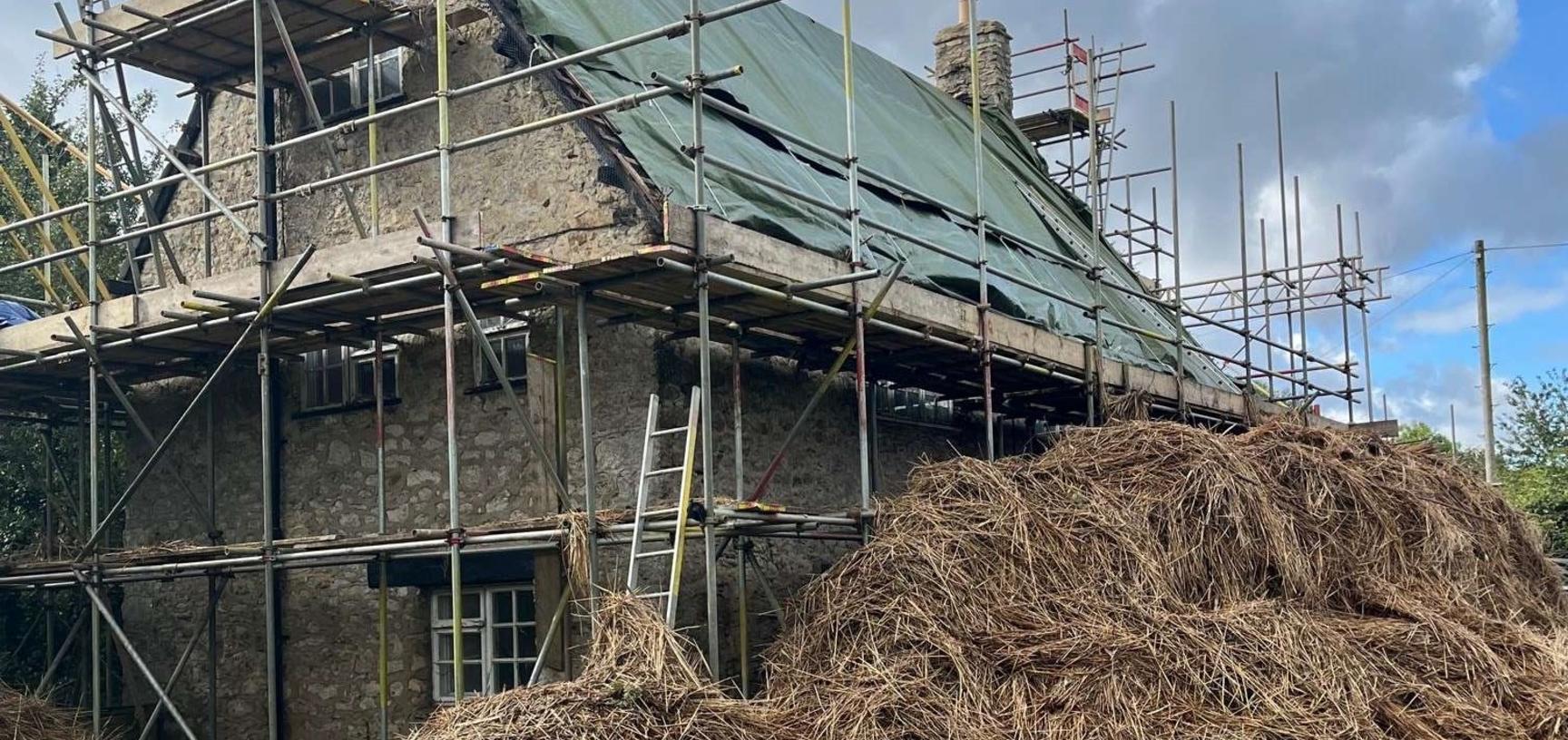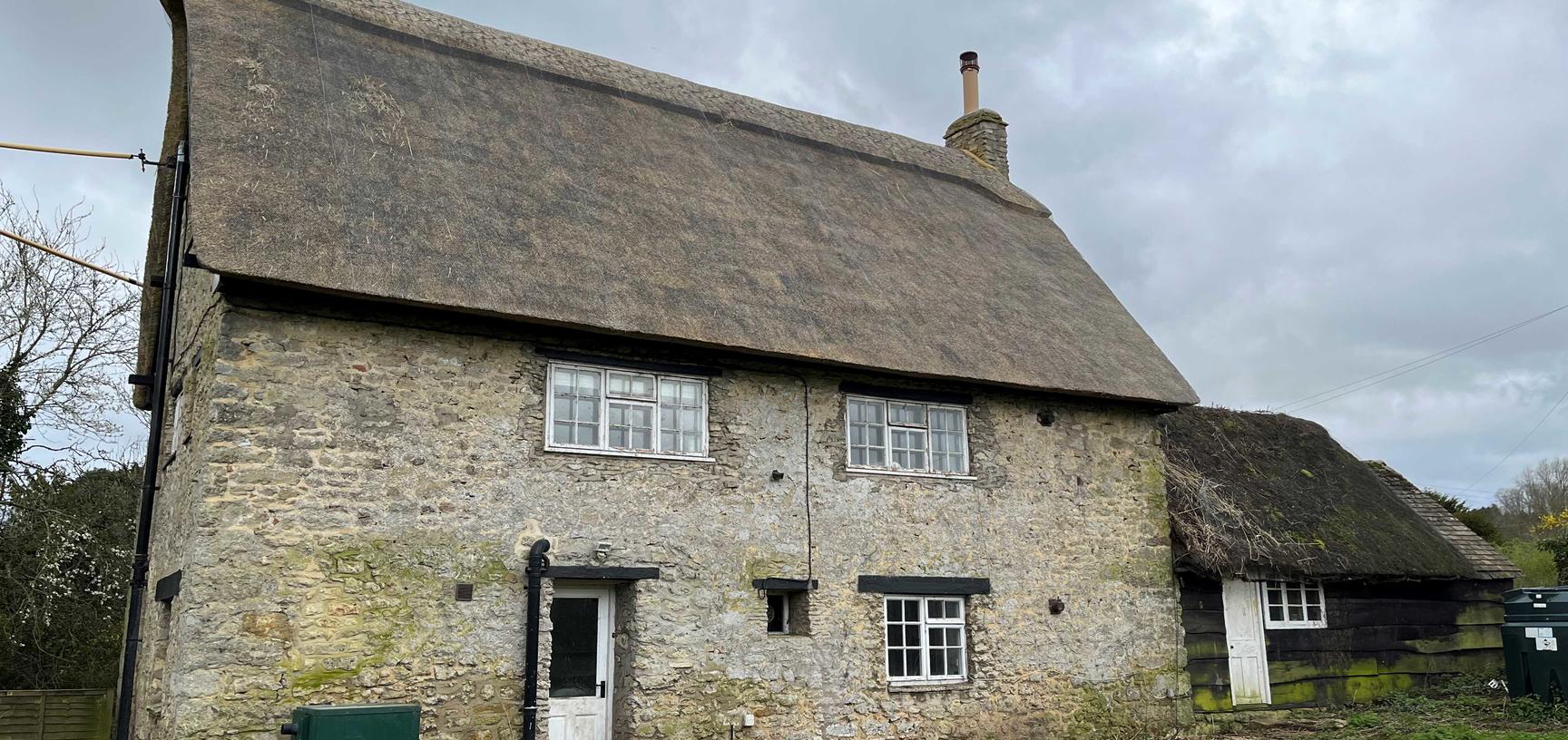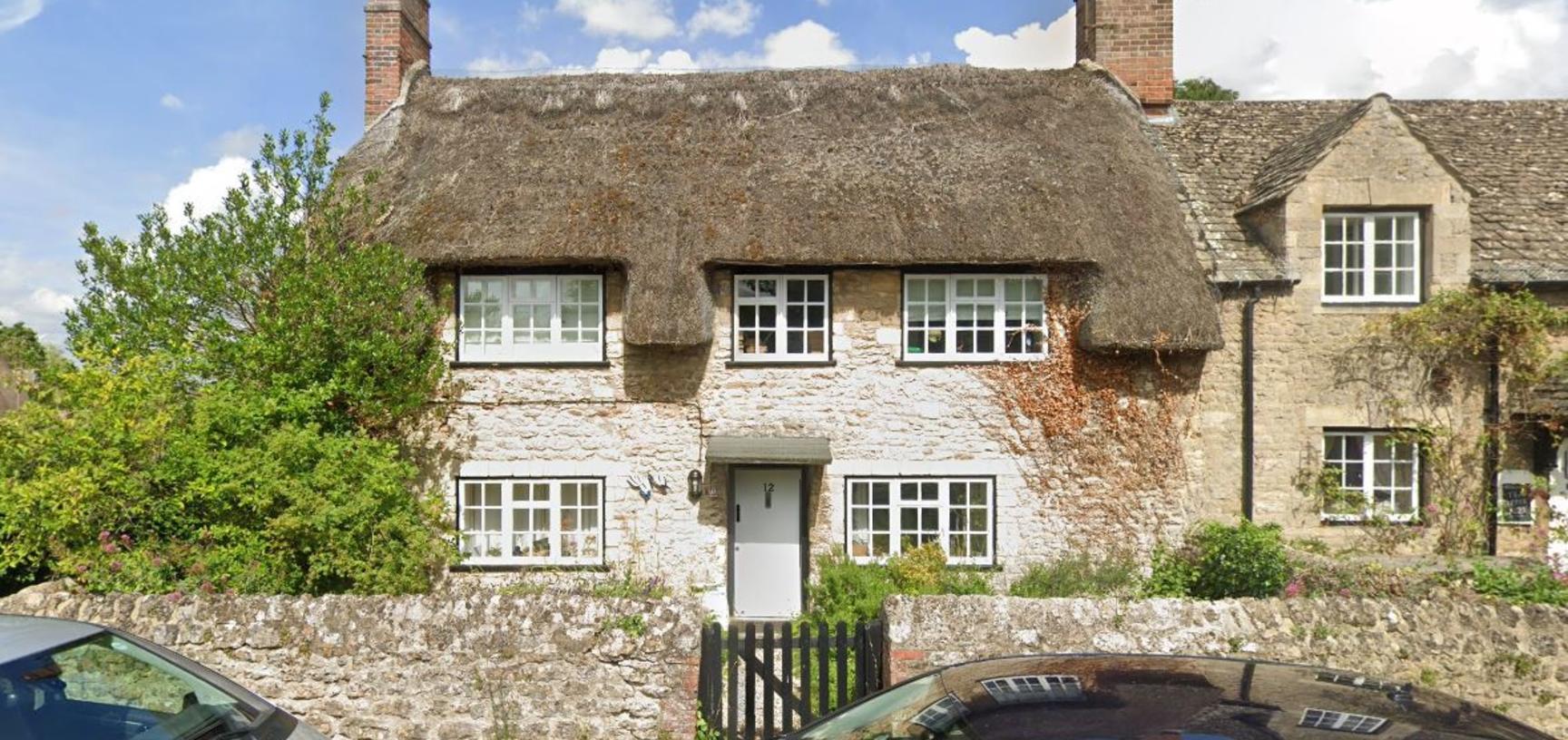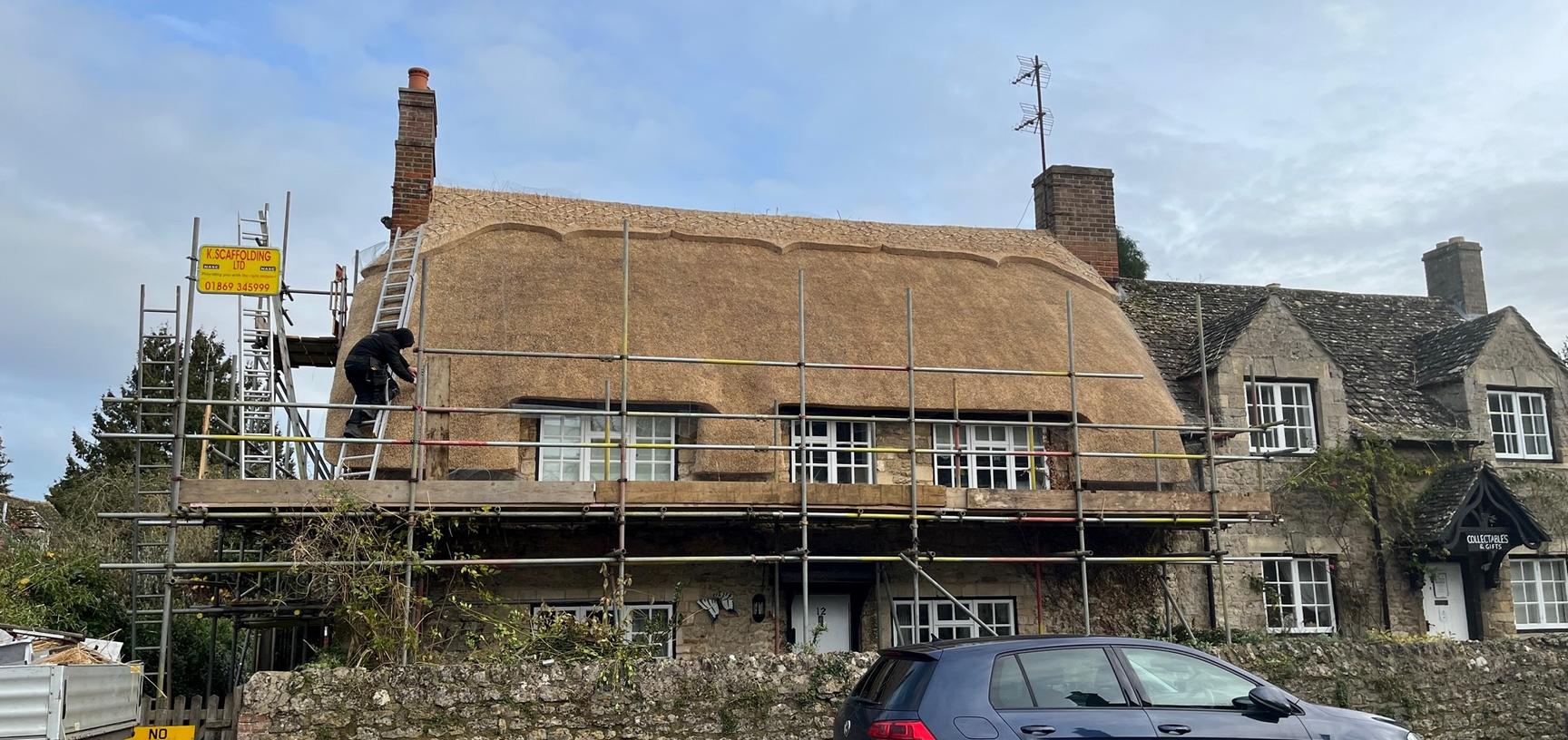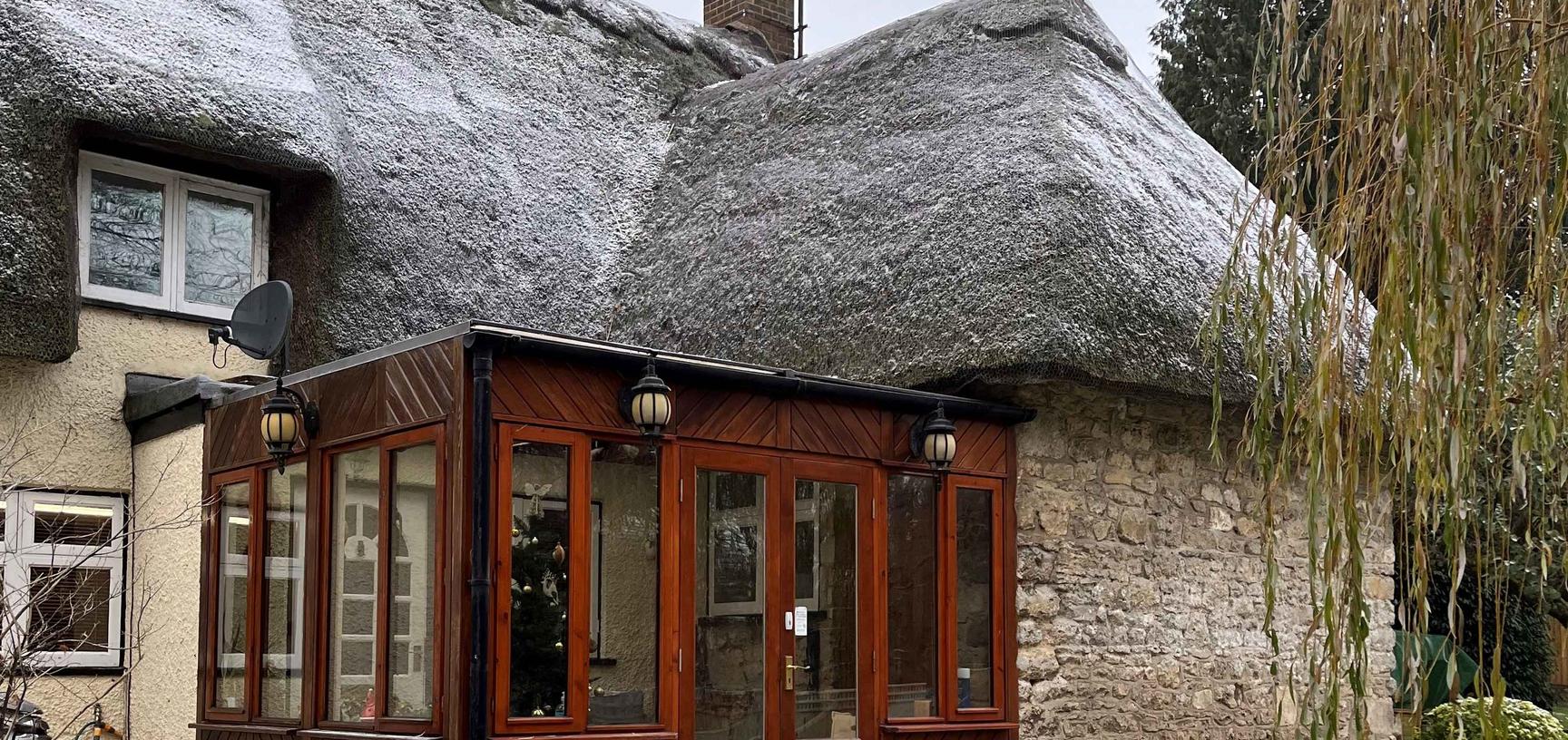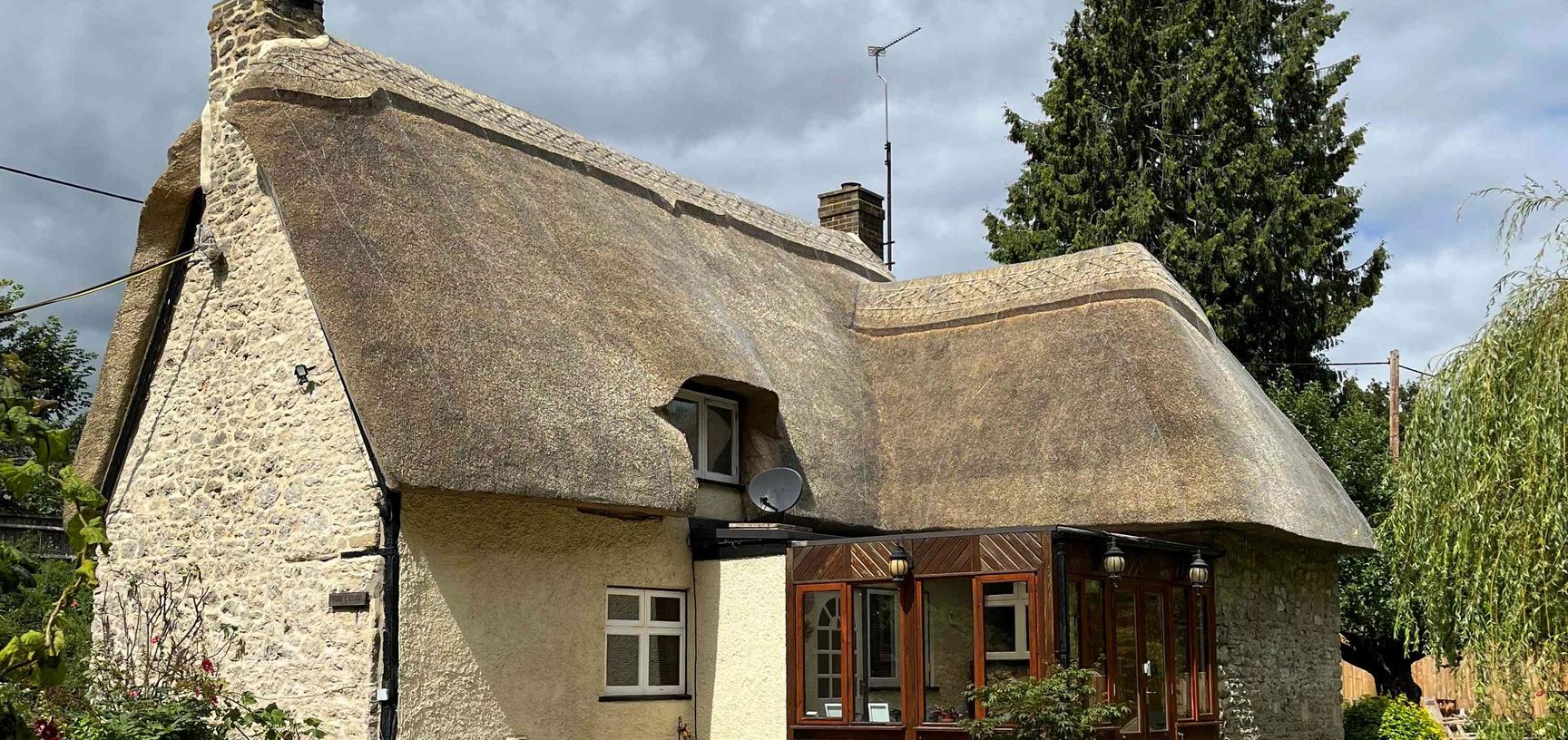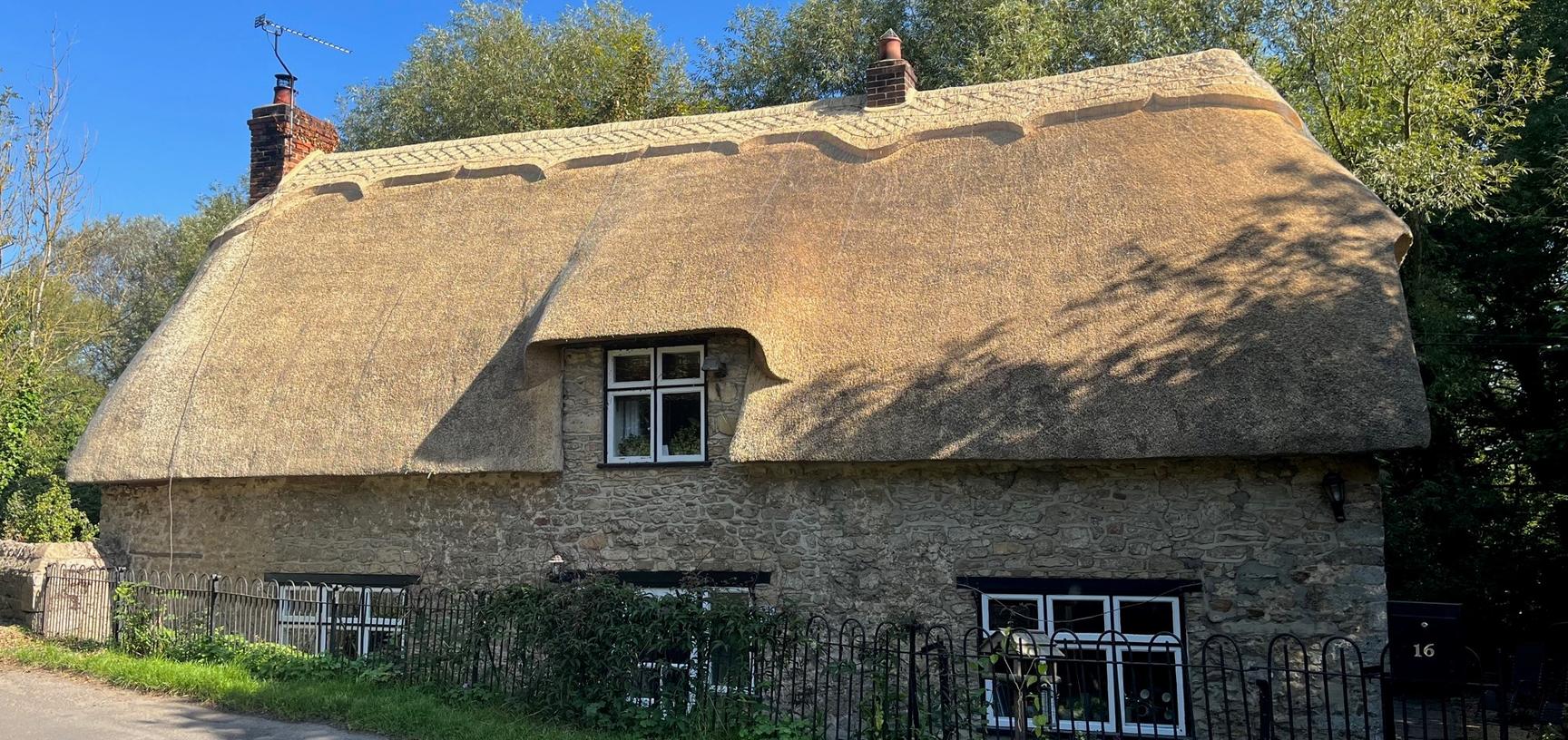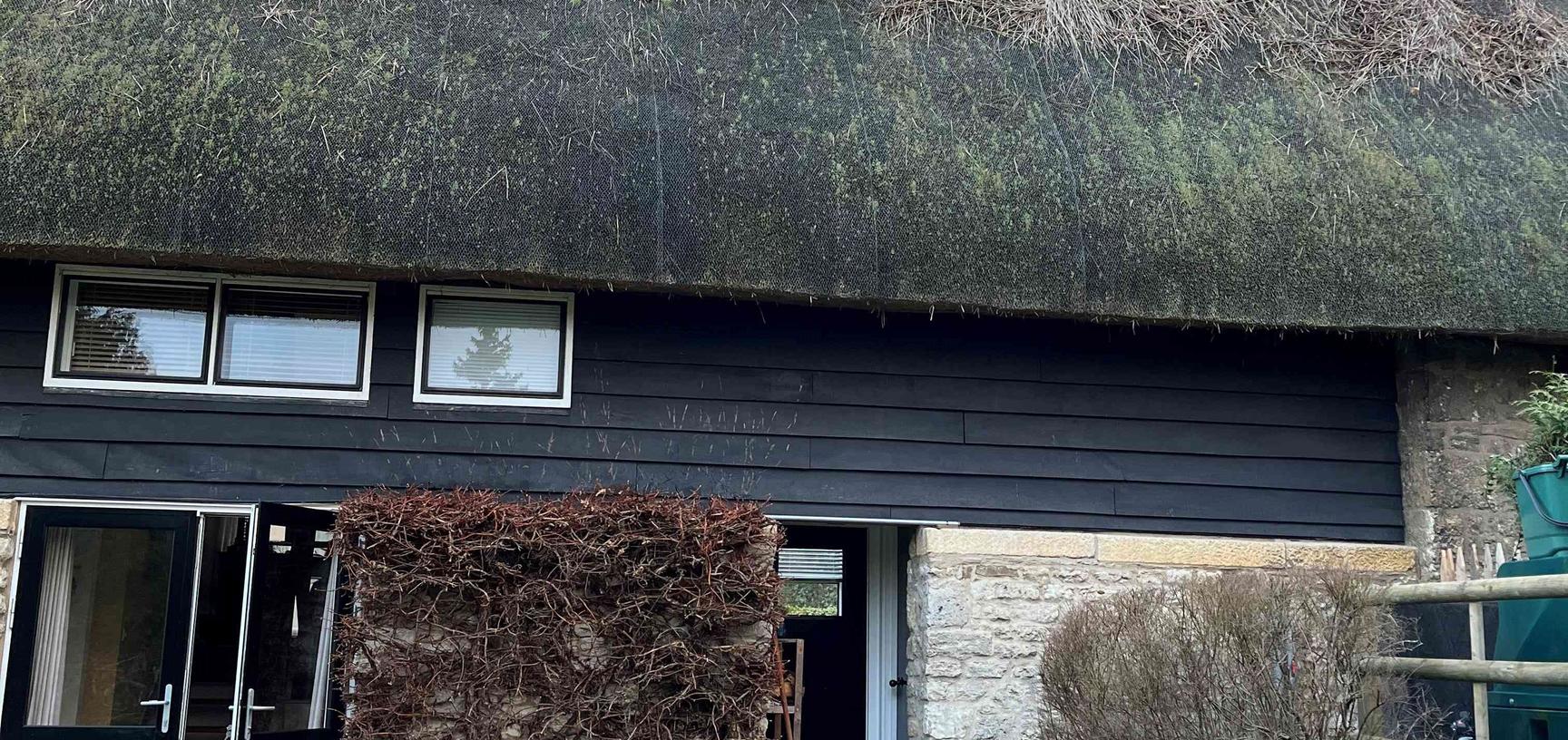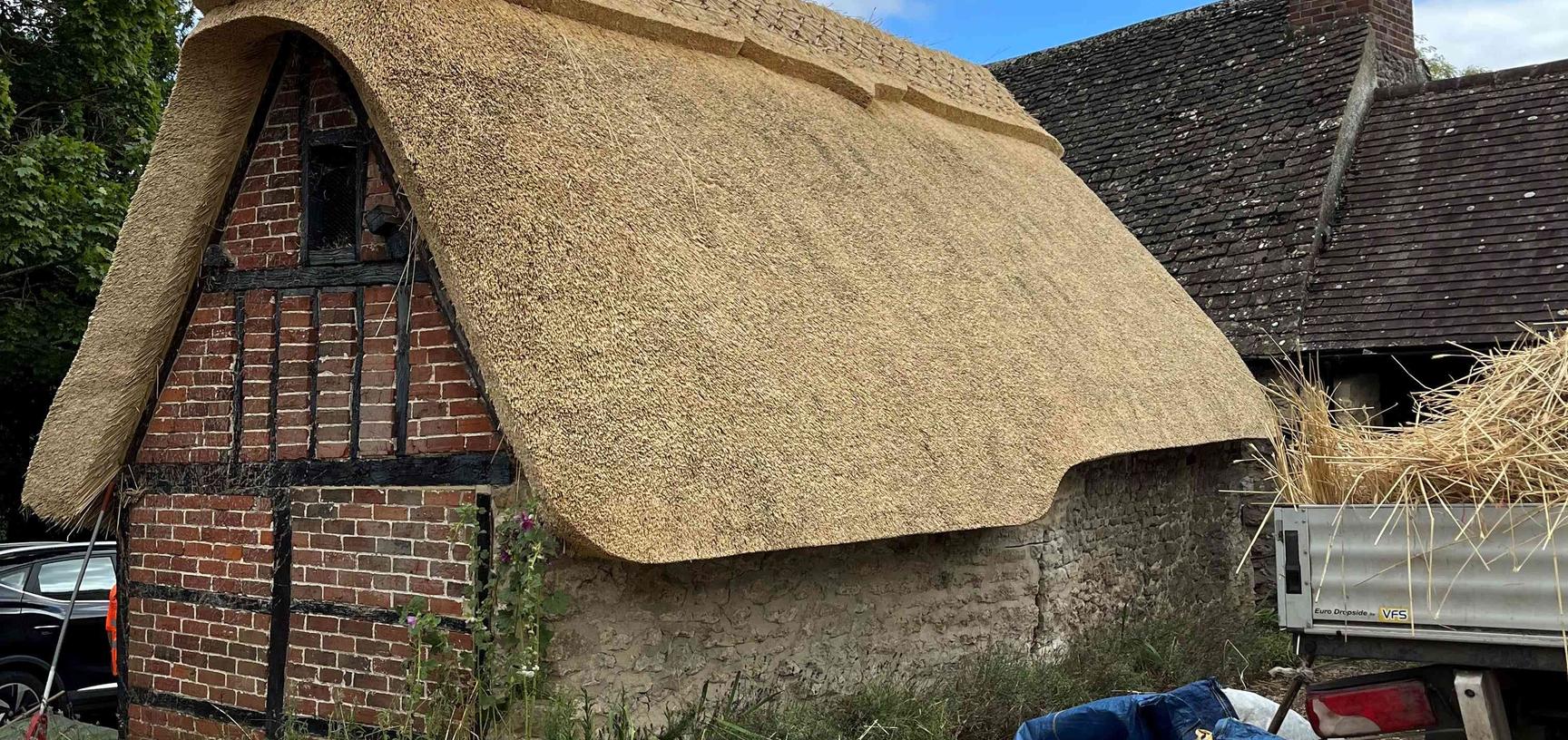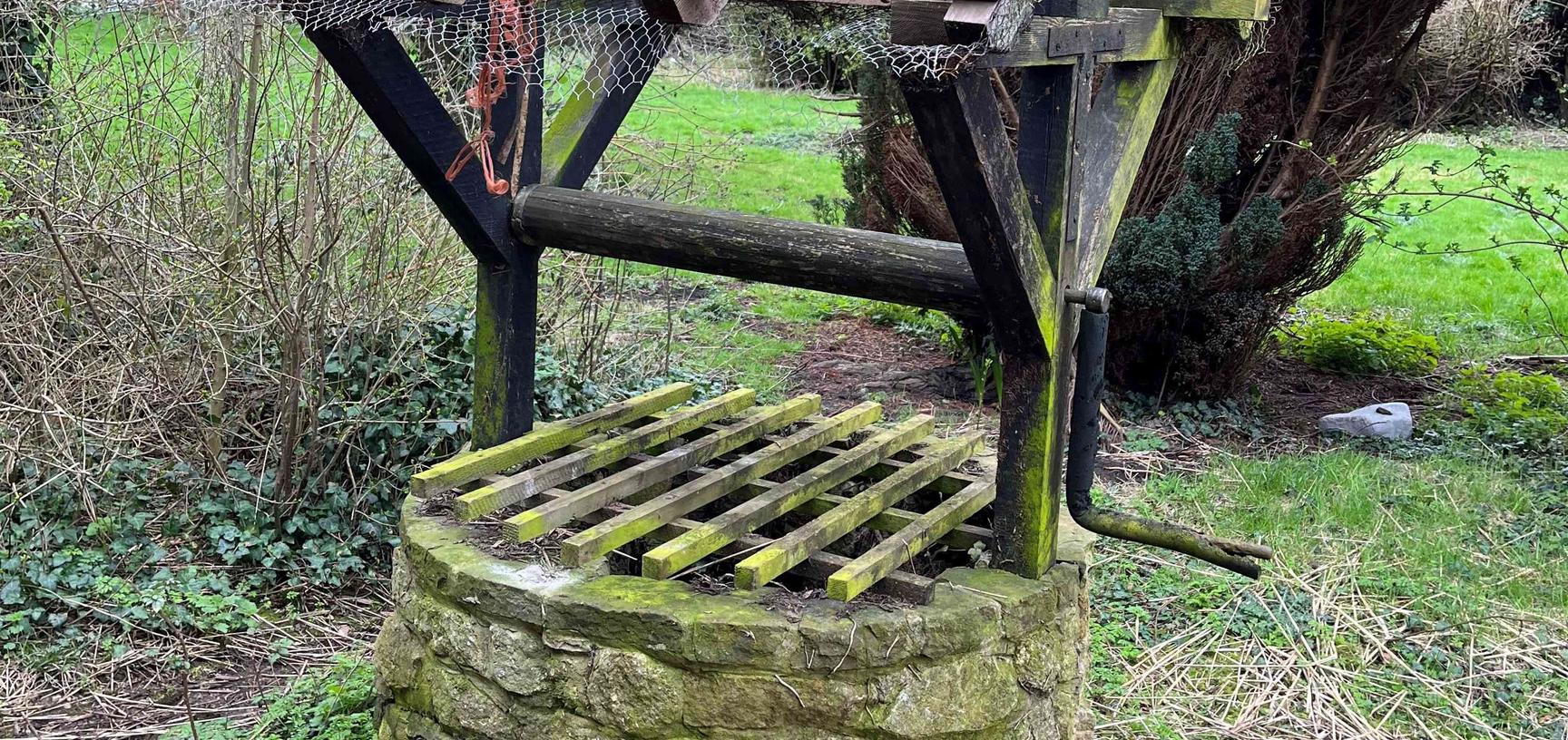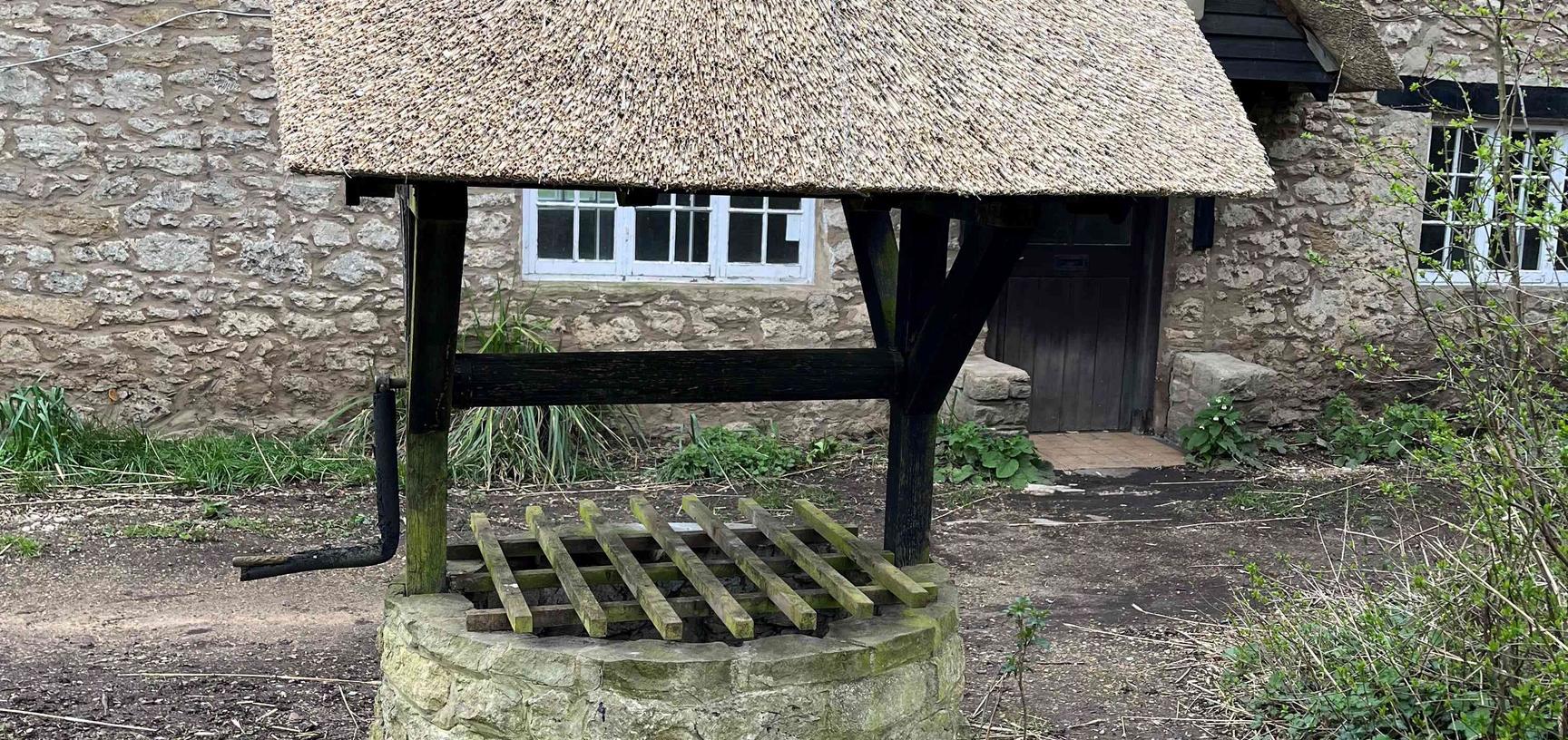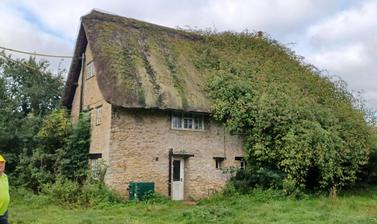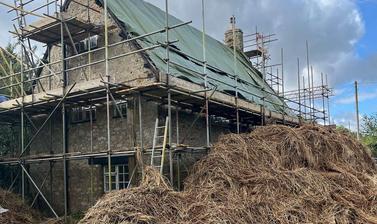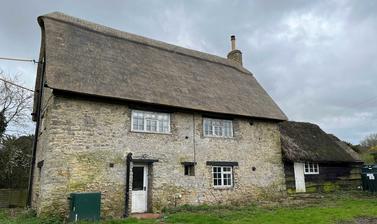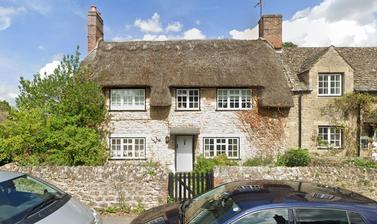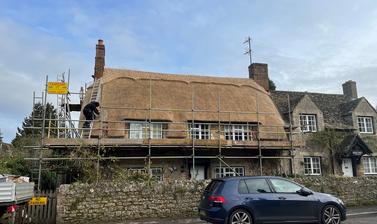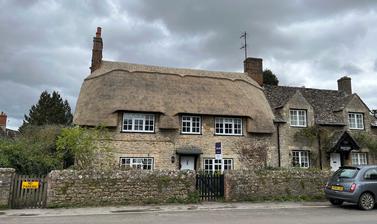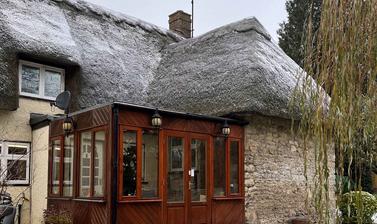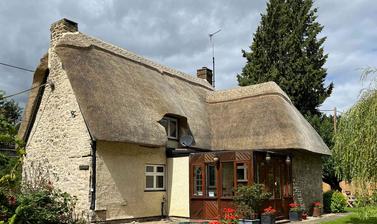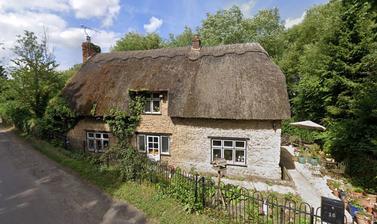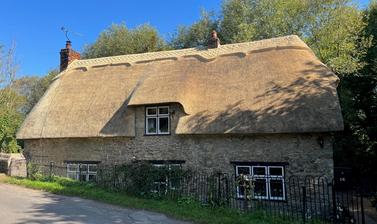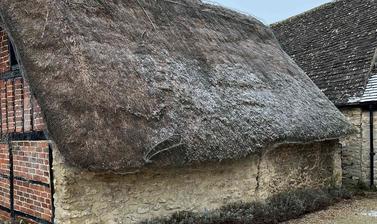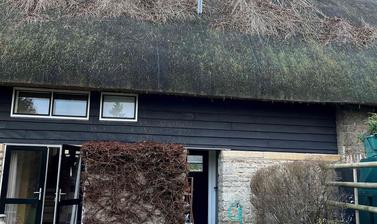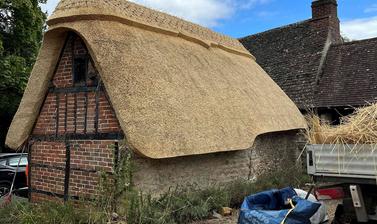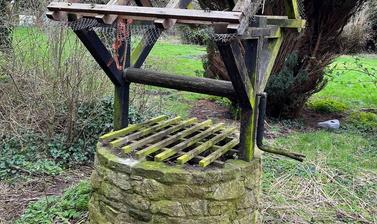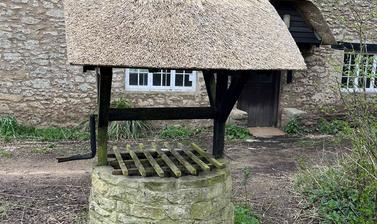Master thatchers restore roofs of Wytham village
Wytham village is looking smarter than it has in a long time, after Estates Services staff and specialist contractors spent almost a year replacing the thatched roofs of many of the houses there.
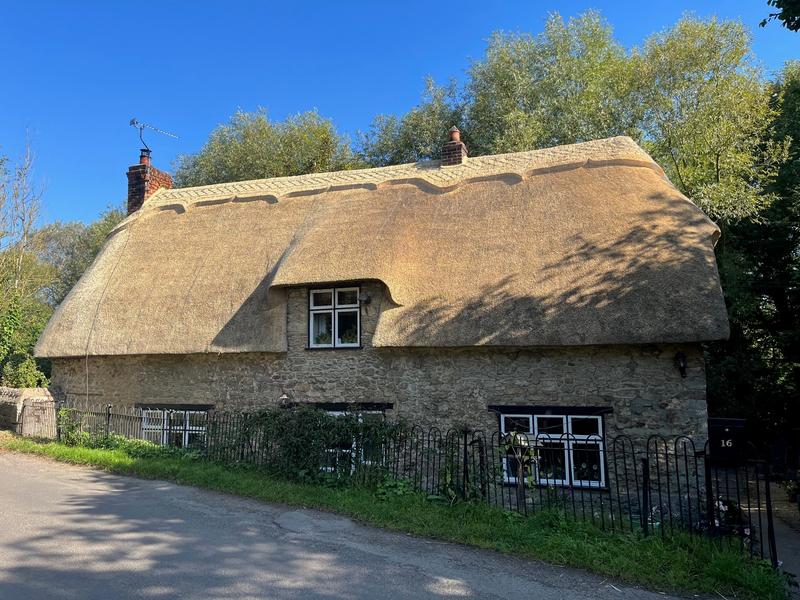
Members of the Heritage & Building Maintenance team in Estates Services managed the project, which began in summer 2023. The main contractor was Beard, with roofing work handled by specialists from J Challis Master Thatcher. Fourteen properties in the village were included, as well as what is believed to be Wytham’s last working well. Seven homes had to be re-thatched entirely, with the others only needing the main ridge to be replaced along with spot repairs in problem areas.
In most cases only the top foot or so of thatch was replaced, with the historic lower levels left in place. A new watertight outer layer of British-grown thatch was then added and secured using traditional hazel spars. The team took care to maintain each roof’s distinctive features, while also adding their own detailing along the ridgelines – master thatchers all have their own unique styles that act like a signature to other specialists.
The team also addressed other problems they discovered in areas like masonry and roof timbers, as well as coping with a variety of wildlife that had found its way into the thatch, including hornets, wasps and squirrels. This is the largest thatching project ever carried out in the village, and the photos below show the beautiful results, which have made a big difference to its appearance.
But the project doesn’t only have cosmetic benefits – it will also make the houses far more comfortable, with better insulation and fewer draughts. It should now be at least 15 years before these roofs need any more major work, although from now on thatchers will visit the village every few months to make sure any problems are spotted early and dealt with.
Turning loose bundles of straw into a tight, weatherproof and durable roof is extremely skilled work, and most thatchers serve at least four-year apprenticeships before they can work independently. Besides its other benefits, the project has also helped preserve these valuable traditional skills, with several apprentices honing their craft on the village’s roofs over its course.
Even the most skilfully installed thatched roof is short-lived compared to tiles or slate, and must be renewed every few decades. But in Wytham, this is compounded by an unusual problem – the local flock of delinquent jackdaws, which enjoy spending their free time pulling straw out of the village’s roofs.
They have been doing this for decades, seemingly for no practical purpose – it is like a game that’s been passed down the jackdaw generations, much to villagers’ annoyance. The flock that roosts in the woods above the village is very numerous, and over time the birds do a lot of damage.
As well as putting this right, the team have also taken steps to control the problem in future, installing a double layer of wire netting all over the roofs. This makes it much harder for the jackdaws to pull straw out, and the team hope it will persuade them to look for fun elsewhere.
All the old thatch was taken to the University’s composting site Begbroke Science Park to keep it out of landfill.
The University owns most of Wytham village, which was bequeathed to it by the ffennell family in 1942 along with Wytham Woods and nearby farmland. The houses are rented to private tenants.

